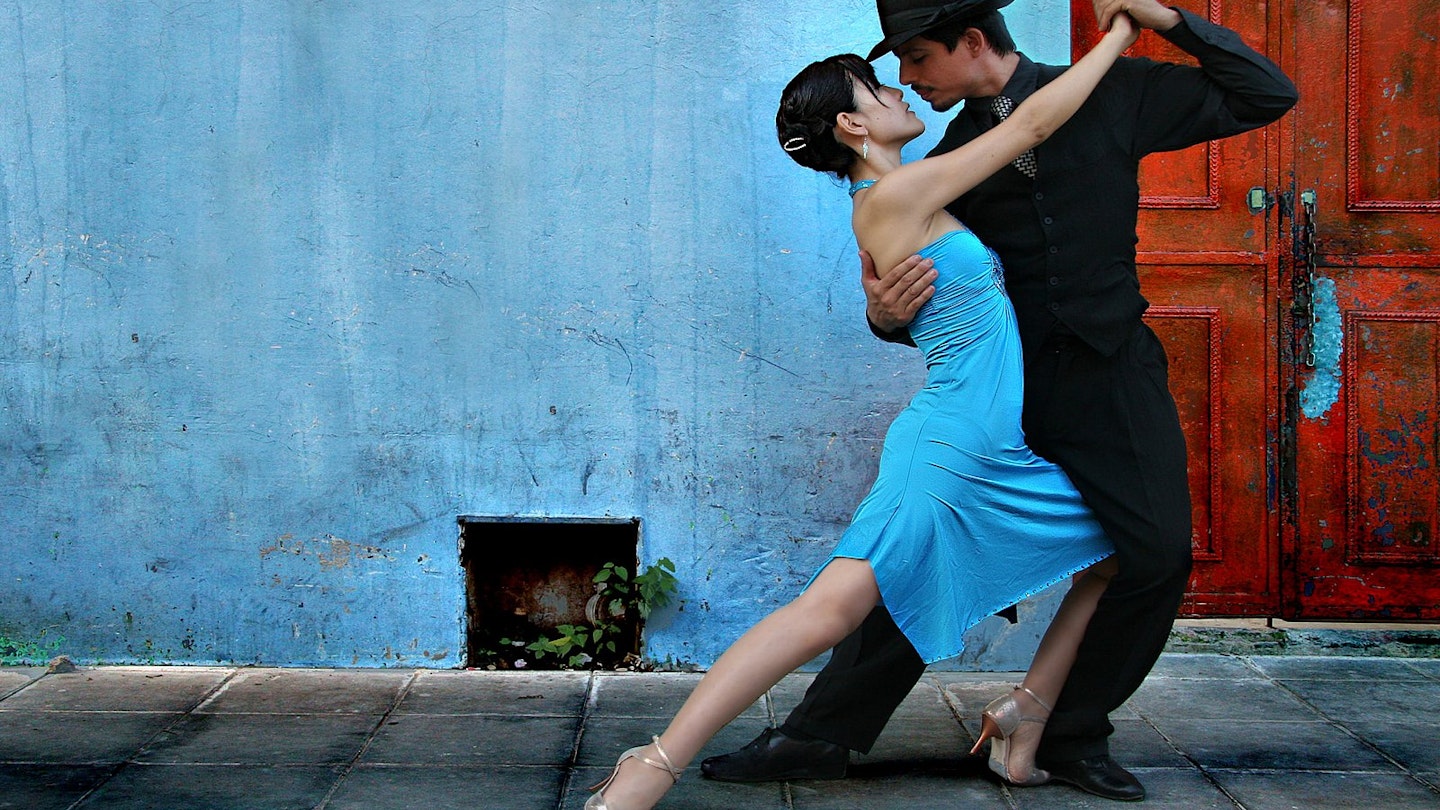Discover the Art and Culture of Buenos Aires with GoTravelDaily
As a world city home to an extensive history and, consequently, a long artistic legacy, Buenos Aires boasts a cultural résumé a mile long. Lovers of fine arts will delight in what the city has to offer; here is a list of favorite art-inspired sights and activities that connect the past and the present of this vibrant metropolis.
Walk the Street That Never Sleeps: Avenida Corrientes
Theater in Argentina really took off at the beginning of the 19th century, when it became more accessible to the masses. Avenida Corrientes served as the center for this boom and continues to be the city’s main theatrical hub, home to numerous performance houses and cinemas. Visitors can catch all types of live shows here, but the most well-known entertainment is teatro de revista, revues that mix comedy, music, and dance. Many entertainers aspire to perform on Corrientes, and the most illustrious even get their name placed on the Walk of Fame.

Discover the Buenos Aires of the Movies
Buenos Aires has made plenty of appearances on the silver screen. The famous balcony scene from Evita (1996) was filmed at the Casa Rosada, while scenes from El secreto de sus ojos (2009) were shot at the Tribunales court house. The city also serves as the heart of the Argentine film industry; if you visit in April, head to the Buenos Aires International Festival of Independent Film to catch cutting-edge films in cinemas around the city.

Revel in the Splendor of Teatro Colón
This iconic opera house technically opened in 1857, though its current (quite magnificent) building was constructed in 1908. It has served as the heartbeat of Buenos Aires’ art scene ever since. The theater is ranked as one of the top concert halls in the world, hosting a variety of Argentine and international performers. The sumptuous interior harkens back to an era when the theater was the place to see and be seen. Snag a ticket to a performance or take the backstage tour to learn about the building’s fascinating history.
Peruse Argentina’s Art History at the National Museum of Fine Arts
Buenos Aires is home to numerous high-quality art museums, but the National Museum of Fine Arts is arguably one of its greatest. The building itself was once a pump house for the city’s water system, and today it features a huge collection of art from some of Argentina’s most renowned artists (including Eduardo Sívori and Antonio Berni) and European greats like Picasso and van Gogh.
Learn About Tango’s Underground History
Of course, tango is deeply ingrained in the city’s cultural heritage. This tradition originated in the cafes and dancehalls of its poorer barrios in the 1880s, where many European immigrants were settling. This dance quickly became a revolution, its sensuality and technical skill appealing to wealthier creole hipsters of the time. Today, San Telmo acts as the center for the tango community, and a trip to Buenos Aires is not complete without a visit to one of its milongas (tango dance halls). Head to Maldita Milonga to catch the best of the city’s tango dance scene.

Take an Art Tour with Gallery
Art walks are a great way to explore a city, guiding visitors to hidden corners full of local art. Gallery organizes a free guided circuit through Buenos Aires’ artistic corridors a few times a year; participants can choose from itineraries that explore different parts of the city, passing through some of its coolest galleries and museums.

Seek Out Iconic Fileteado
The city’s art isn’t limited to gallery spaces. Fileteado refers to a decorative style of lettering characterized by bright colors, detailed fonts, and organic framing lines, first used as a wagon decoration at the beginning of the 20th century. It has since evolved into an artistic symbol of the city and was declared a representative of Intangible Cultural Heritage by UNESCO in 2015. If you want to spot this iconic art in the wild, head to the neighborhoods of Almagro, San Telmo, and La Boca.
Create Your Own Urban Art Itinerary
Urban art takes many forms, and Buenos Aires’ graffiti and murals are increasingly becoming attractions in their own right. Inspired by the graffiti and street art of the Bronx, artists have created sprawling pieces that decorate walls around the city, specifically in the neighborhoods of Palermo and Colegiales. Hit the neighborhood streets and discover the best of this larger-than-life art.

Recoleta Cemetery: A Great Expression of Sculpture
The Recoleta Cemetery is one of Buenos Aires’ top attractions, famous for the notable individuals who rest inside and the impressive sculptures featured alongside the mausoleums of this massive necropolis. Wander the sepulchral streets to appreciate the artistry behind each structure, most of which were built over the decades by the city’s wealthiest families, who spared no expense when it came to funerary design.
Learn About the Artistic Residents of La Boca
La Boca is well known for its immigration history, serving as Buenos Aires’ main port where European immigrants arrived in droves at the turn of the 20th century. Visit Caminito, filled with colorful houses called conventillos, to wander the famous street that was once home to one of Argentina’s most famous artists, Benito Quinquela Martín. Quinquela’s art depicted daily life around La Boca during the early 1900s; visit the Museo Benito Quinquela Martín to see his works up close.





